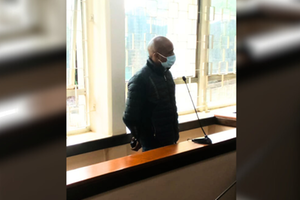Take high-tech path to water sufficiency

A picture of Kenya's Masinga Dam. FILE PHOTO | NATION MEDIA GROUP
What you need to know:
- Souk Tleta is a joint venture between Malakoff Berhad of Malaysia and the State-owned Algeria Energy Company.
- Political will to resolve looming water resource-related conflicts due to absolute territorial sovereignty is paramount.
Fifty metres inland, off the Mediterranean Sea coast, lies the only desalination plant that uses a combination of ultrafiltration to remove total suspended solids, reverse osmosis to remove total dissolved solids (salts) and post-treatment reconditioning unit to desalinate feed water from the sea!
Souk Tleta Desalination Plant gained global recognition as “Highly Commended Desalination Plant of the Year” at the 2012 Global Water Awards.
It is operated using supervisory control and data acquisition (Scada) system and programmed logic controllers with digitised meters for monitoring contaminant levels at the distribution point.
UNTOLD STORIES
It treats 250,000 cubic metres (250 million litres) of water daily. This plant, which distributes to major parts of Tlemcen and nearby regions of Algeria, definitely stands out as one of the untold stories from Africa.
Souk Tleta is a joint venture between Malakoff Berhad of Malaysia and the State-owned Algeria Energy Company.
A masterpiece combination of Algerian, Malaysian and Indian engineering and collaboration at the planning, implementation, operation and maintenance levels, it was built under a concession contract in a bid to increase water access in Algeria, where water is scarce economically and physically.
The plant stands out as a beacon of hope for technology adoption for coastal towns that lack water due to erratic rainfall and salt intrusion into the aquifers, rendering ground water unusable. It also emphasises the need for research on water treatment and sustainable energy sector since desalination requires a lot of energy.
SOLAR ENERGY
A similar system using solar energy, Al Khafji Solar-Powered Desalination Plant, under construction in Saudi Arabia, is expected to supply 60,000 cubic metres daily.
This is a sign that, through investment, cooperation, technology sharing and research, we can achieve Goal 6 of the Sustainable Development Goals (clean water and sanitation) in the foreseeable future.
However, political will to resolve looming water resource-related conflicts due to absolute territorial sovereignty is paramount.
Investment in innovation and research is necessary to increase efficiency and efficacy of water treatment and use so as to sustainably achieve SDG 6.
Tlemcen Wilaya and many other projects in Algeria practise irrigation using desalinised water and have made arid land arable.
It is inevitable for governments, particularly in Africa, to adopt and develop location-specific technologies through benchmarking and indigenous knowledge to ensure the unforeseeable effects of climate change are predicted and mitigated in time and the increasing population has consistent and acceptable quality water supply at all times.
DESIGN
It will be prudent for governments to embrace a co-design approach in water projects in a bid to promote economic, social and environmental sustainability. The project’s design also needs to be user-centred.
Kenya recently discovered a saline aquifer, Lotikipi in the arid county of Turkana, with a yield of 200 billion cubic metres of water, which can comfortably supply the entire country for 70 years.
This is good news for a water-scarce country with per capita renewable water resources of less than 1,000 cubic metres and a 5 per cent water coverage, but the water requires reverse osmosis technology to desalinise.
Although the cost for the initial plant set-up, operation, maintenance, distribution and capacity development are definitely enormous, the returns and the economic growth spurred by such a project can revolutionise the entire country and nearby regions since water is the basic raw material for most industries, including agriculture.
DONORS
With planned development starting with investment in the geothermal, wind and solar electricity to ensure sustained energy provision to such treatment plants, Kenya can achieve a vibrant and sustainable economy not dependent on donors.
The newly established Water Works Development Agency by the Kenyan Water Act 2016 has a huge task of developing infrastructure. It ought to think of non-conventional water resources.
The Water ministry, in its third medium-term plan (2018-2022), could develop policies that align with current and future needs as informed through co-design sessions involving all stakeholders and modelling forecasts from professionals.
Mr Kiambuthi is a water and environment engineer and is a master’s degree student at the University Abou Bekr Belkaïd in Algeria. [email protected].





